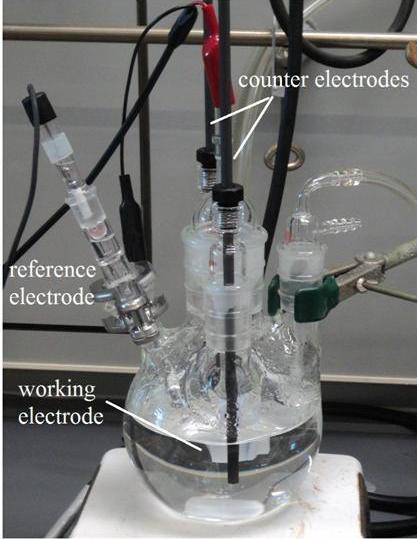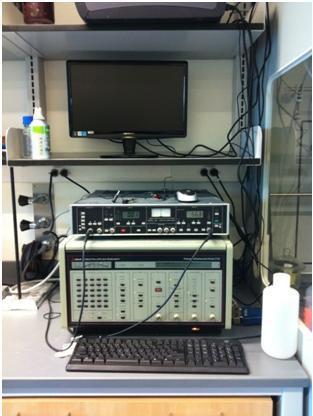EIS Setup
Electrochemical Impedance Spectroscopy (EIS) Setup
The
Corrosion Cell
The Potentiostat and Amplifier


The EIS setup consists of a
potentiostat (EG&G Princeton Applied Research Potentiostat/Galvanostat Model 273A)
and a lock-in amplifier (EG&G Princeton Applied Research Model 5210 Lock-In Amplifier)
operated by a PowerSuite software package. We use EIS to study corrosion rates of
conductive materials in aqueous environments, and ways to decrease and/or prevent that corrosion.
An alternating potential of 10 mV is applied over a range of frequencies, generally from 105-10-1 Hz,
and the resulting current is measured. For each frequency an impedance is determined and plotted
(real v. imaginary components). From the plot the corroding system is modeled by an electrical
circuit and the corrosion rate of the system can be determined. Once the corrosion rates of
various systems are known, we compare the corrosion rates of inhibited and non-inhibited systems
to determine the effectiveness of the inhibitor under study.